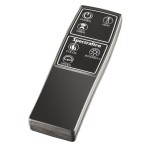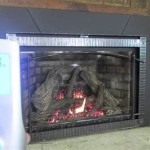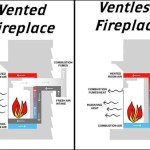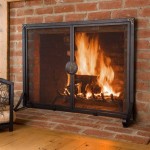Firebox for Outdoor Fireplace: A Comprehensive Guide
An outdoor fireplace can transform a backyard, patio, or deck into a cozy and inviting space for relaxation and entertainment. At the heart of any outdoor fireplace lies the firebox, the component responsible for containing the fire and directing heat. Understanding the various aspects of a firebox is crucial when building a new outdoor fireplace or upgrading an existing one. This article provides a comprehensive overview of fireboxes for outdoor fireplaces, covering their purpose, types, materials, construction considerations, and maintenance.
Purpose of the Firebox
The firebox serves several critical functions within an outdoor fireplace. Primarily, it is designed to safely contain the fire, preventing it from spreading beyond the designated area. This containment provides a crucial layer of safety, minimizing the risk of uncontrolled burns and potential property damage. Furthermore, the firebox is responsible for directing the heat produced by the fire outwards into the surrounding space. Its design and materials influence how effectively the heat is radiated, providing warmth and comfort to those nearby.
Beyond containment and heat direction, the firebox also plays a significant role in the overall efficiency of the fireplace. A well-designed firebox can optimize the combustion process, allowing for more complete burning of wood and reducing the amount of smoke produced. This is achieved by controlling airflow and promoting proper ventilation. The shape and size of the firebox also contribute to its efficiency, dictating how effectively the fire generates and distributes heat.
The firebox is also a key aesthetic element of the outdoor fireplace. While often concealed by stonework or brick, the shape and depth of the firebox influence the overall appearance of the finished fireplace. The firebox provides the framework for building the fire, and its dimensions dictate the size and arrangement of the wood logs. Therefore, the firebox is not merely a functional component, but also a vital element in the visual appeal of the entire outdoor fireplace structure.
Types of Fireboxes
Fireboxes for outdoor fireplaces come in various types, each with its own advantages and disadvantages. The selection of the appropriate type depends on factors such as the desired size and style of the fireplace, budget constraints, and construction expertise. Some common types include pre-fabricated metal fireboxes, masonry fireboxes, and modular block fireboxes.
Pre-fabricated metal fireboxes are a popular choice for their ease of installation and relatively low cost. These fireboxes are typically constructed from heavy-gauge steel or stainless steel and are designed to be inserted into a masonry or framed enclosure. They often come with features such as built-in grates, ash pans, and damper systems. Pre-fabricated metal fireboxes offer a consistent shape and size, which simplifies the construction process. However, they may not offer the same level of customization as masonry fireboxes.
Masonry fireboxes are constructed from fire-resistant bricks or stone and are built on-site. This type of firebox offers the greatest degree of customization, allowing for unique shapes, sizes, and designs. Masonry fireboxes are typically more expensive and require more skilled labor to construct. However, they offer a more traditional and visually appealing aesthetic. The thermal mass of masonry fireboxes also contributes to their heat retention capabilities, allowing them to radiate heat for a longer period after the fire has burned down.
Modular block fireboxes provide a middle ground between pre-fabricated metal fireboxes and masonry fireboxes. These fireboxes are constructed from interlocking concrete blocks that are designed to withstand high temperatures. Modular block fireboxes are relatively easy to assemble and offer a degree of customization. They are typically less expensive than masonry fireboxes but offer a more substantial and permanent structure than pre-fabricated metal fireboxes. They allow for faster construction than traditional masonry, reducing labor costs while still achieving a professional result.
Materials and Construction Considerations
The materials used to construct a firebox must be able to withstand the extreme temperatures generated by a wood-burning fire. The most common materials used are firebrick, fireclay mortar, and high-temperature steel. The specific materials and construction techniques will depend on the type of firebox being built.
Firebrick is a type of ceramic brick that is specifically designed to withstand high temperatures. It is typically used to line the interior of masonry fireboxes, providing a protective layer against the direct heat of the fire. Firebrick is available in various sizes and shapes, allowing for flexible construction options. It's crucial to use firebrick certified for fireplace applications to ensure safety and longevity.
Fireclay mortar is a special type of mortar that is formulated to withstand high temperatures. It is used to bond firebrick together and to seal gaps in the firebox. Ordinary mortar will crack and crumble under high heat, so it is essential to use fireclay mortar for all masonry firebox construction. Proper mixing and application of fireclay mortar are crucial for maintaining the structural integrity of the firebox.
High-temperature steel is used in the construction of pre-fabricated metal fireboxes. This type of steel is designed to resist warping and cracking under extreme heat. The thickness of the steel is also important, as a thicker gauge steel will be more durable and will last longer. The welds on a metal firebox should be strong and continuous to prevent leaks and structural failures. The steel is often coated with a heat-resistant paint to further protect it from corrosion and the elements.
When constructing a firebox, it is essential to follow building codes and safety regulations. This includes ensuring adequate ventilation, proper clearances from combustible materials, and compliance with local zoning ordinances. A properly constructed firebox will not only be safe but also efficient and long-lasting.
Proper ventilation is crucial for efficient combustion and to prevent the buildup of harmful gases, such as carbon monoxide. The firebox should be designed with adequate air inlets to allow for sufficient oxygen to reach the fire. The chimney or flue should also be properly sized to ensure that combustion gases are efficiently vented out of the firebox.
Clearances from combustible materials are essential to prevent fires. The firebox should be located a safe distance away from any nearby structures, trees, or other flammable objects. The National Fire Protection Association (NFPA) provides guidelines for safe clearances, which should be followed when constructing an outdoor fireplace. These guidelines specify minimum distances between the firebox and combustible materials to minimize the risk of accidental fires.
Firebox Maintenance
Regular maintenance is essential to ensure the safety and longevity of an outdoor fireplace firebox. This includes cleaning, inspection, and repair. Neglecting maintenance can lead to reduced efficiency, increased safety risks, and costly repairs.
Cleaning the firebox involves removing ashes, soot, and creosote. Ashes should be removed regularly to prevent them from accumulating and blocking airflow. Soot and creosote can build up on the walls of the firebox and chimney, increasing the risk of chimney fires. These deposits should be removed periodically using a wire brush or chimney sweep.
Inspection of the firebox should be conducted regularly to identify any signs of damage or deterioration. This includes checking for cracks in the firebrick or mortar, rust or corrosion on metal fireboxes, and any signs of structural weakness. Early detection of problems can prevent them from escalating into more serious issues.
Repair should be undertaken promptly to address any identified problems. Cracks in firebrick or mortar should be repaired with fireclay mortar. Rust or corrosion on metal fireboxes should be treated with a rust inhibitor and paint. Any structural damage should be addressed by a qualified professional. Ignoring repairs can compromise the safety and efficiency of the fireplace. Regular maintenance, including cleaning, inspection, and repair, will ensure that an outdoor fireplace firebox remains safe, efficient, and enjoyable for many years to come.

Outdoor Fireplace Kits Masonry Stone

Outdoor Fireplace Kits Masonry Stone

Diy Outdoor Fireplace Kit Fremont Makes Hardscaping And Easy

How To Build An Outdoor Fireplace Step By Guide Buildwithroman

Outdoor Fireplace With Bench Seating W Tips From A Professional Mason

Helex Outfire Firebox Offers Outdoor Fireplace And Barbecue All In One Homecrux

Diy Outdoor Fireplace Kit Fremont Makes Hardscaping And Easy

Diy Outdoor Fireplace Kit Fremont Makes Hardscaping And Easy

How To Build An Outdoor Fireplace Step By Guide Buildwithroman

Outdoor Vent Free Gas 50 Firebox Mosaic Masonry Superior Signature Series Inch Vre6050 Vre600 F4227
Related Posts








